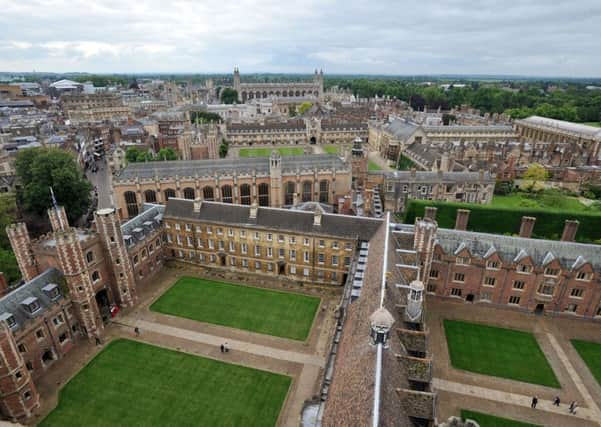Poorer students missing out


New figures show the overall proportion of disadvantaged students starting at a Russell Group university - considered the best in the country - has stalled in the past 10 years.
The findings come weeks after Prime Minister David Cameron warned educational institutions they need to do more to tackle social inequality.
Advertisement
Hide AdAdvertisement
Hide AdAround one in six (17.2%) students from lower social groups started a course at a Russell Group institution last year, compared with nearly one in three (32.1%) of their wealthier peers.
One charity leader said it was “worrying” that the gap has widened at some universities.
The Russell Group said progress is being made to ensure able students from all backgrounds have access to its universities, but it cannot solve the problem alone.
Last week we carried a story about a record number of students at Winstanley College who have been successful in their Oxbridge applications, but this apparently is not being repeated across all regions. Out of the 24 Russell Group universities, Oxford had the lowest proportion of entrants from poorer backgrounds at one in 10, the analysis shows, followed by Cambridge with 10.2%.
Advertisement
Hide AdAdvertisement
Hide AdTen years ago, poorer students made up around one in eight Oxbridge entrants.
Queen Mary University of London had the highest proportion with more than a third of entrants (37%) from disadvantaged backgrounds.
Almost a third of Russell Group universities - seven institutions across the UK - have seen a drop in the proportion of poorer entrants in the past decade, the analysis shows.
In England, Exeter has seen the biggest fall, down 2.6 percentage points compared with 2004/05. Others include Oxford (down 2.3), Cambridge (down 2.2), Durham (down 1.4) and Imperial College London (down 2.5).
Advertisement
Hide AdAdvertisement
Hide AdThe falls come despite attempts by universities and successive governments to widen access to higher education - particularly the most selective institutions.
As part of major reforms that saw tuition fees in England rise to £9,000, English universities wishing to charge this amount have to sign access agreements with the Office for Fair Access (OFFA). These documents, tailored to each institution, set out legally binding targets on areas such as disadvantaged students.
Wendy Piatt, director-general of the Russell Group, said: “Ensuring our doors are wide open to talented and able students from all backgrounds really matters to us and real progress is being made. Last year 1,760 more students from low socio-economic backgrounds went to a Russell Group university than in 2009.
“The number of students eligible for free school meals going to our universities has doubled in the last four years, and the number of black and minority ethnic students has increased by more than a third since 2012.”
Advertisement
Hide AdAdvertisement
Hide AdUniversities spend hundreds of millions of pounds each year on bursaries, scholarships and work with schools and colleges, she said.
Lee Elliot Major, chief executive of social mobility charity the Sutton Trust, said: “It is good to see that the proportion of state school students entering top universities has risen over the past decade. However it is worrying that the access gap between those from poorer backgrounds and their more advantaged peers has actually widened at some universities.”